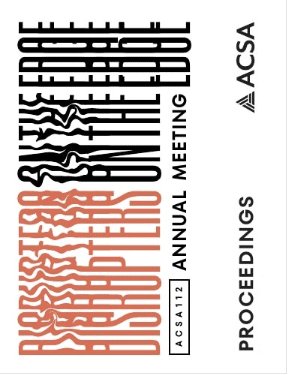Author(s): Michael Harpster
Despite the impending threats of the ever-worsening climate crisis and the obvious need for an increase in the country’s housing stock, the ability for architects and developers to construct denser, more sustainable, and more diverse forms of housing remains incredibly elusive. Whether as the result of racist, outdated municipal zoning policies or the political influence of NIMBY detractors, it remains difficult to realize alternate forms of infill housing in jurisdictions across the United States. The purpose of this paper is to consider the architect’s role in the face of these regulatory restrictions and to present a framework for realizing alternative models of housing through a tactical subversion of local zoning ordinances. Using a housing project proposal developed within an undergraduate design studio, the paper illustrates how architectural students and practitioners might leverage a critical reading of local zoning ordinances to realize dense, in-fill housing projects even within otherwise highly-conservative policy environments. Using Michel de Certeau’s conceptualization of tactics as an initial framework, this paper considers how architects might work against the negative constraints of particular zoning policies not from a position of autonomy or strength, but from a place of contingency and weakness. While architects have little control over the broader zoning and regulatory policies that inform their work, embracing the role of tactician can allow the architect to explore the “cracks” that exist within such regulatory frameworks and to achieve “surprises” that might have previously seemed unattainable. In response to recent calls to expand the discipline’s boundaries and to mine its edges for greater cultural relevance and social impact, the work presented here illustrates how a tactical engagement with zoning policy might allow the discipline to have a broader and more immediate impact on the built environment. And while the results of this work remain provisional and highly contingent, the projects nevertheless demonstrate the ability of the architect or architectural student to operate pragmatically, engaging the realities of regulatory frameworks and public zoning policy to realize immediate, if incremental progress within the culture of housing.
https://doi.org/10.35483/ACSA.AM.112.86
Volume Editors
Germane Barnes & Blair Satterfield
ISBN
978-1-944214-45-6

 Study Architecture
Study Architecture  ProPEL
ProPEL 
